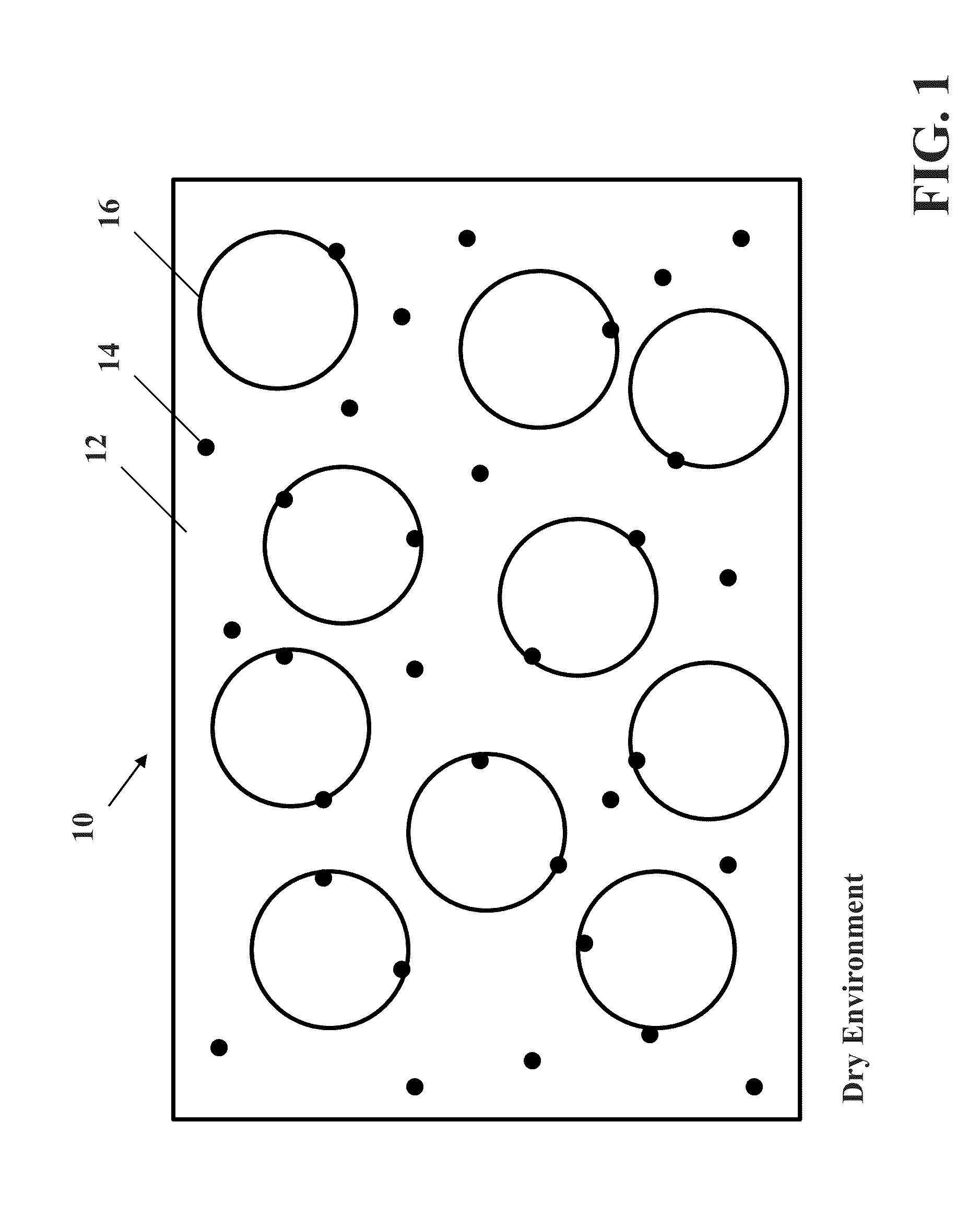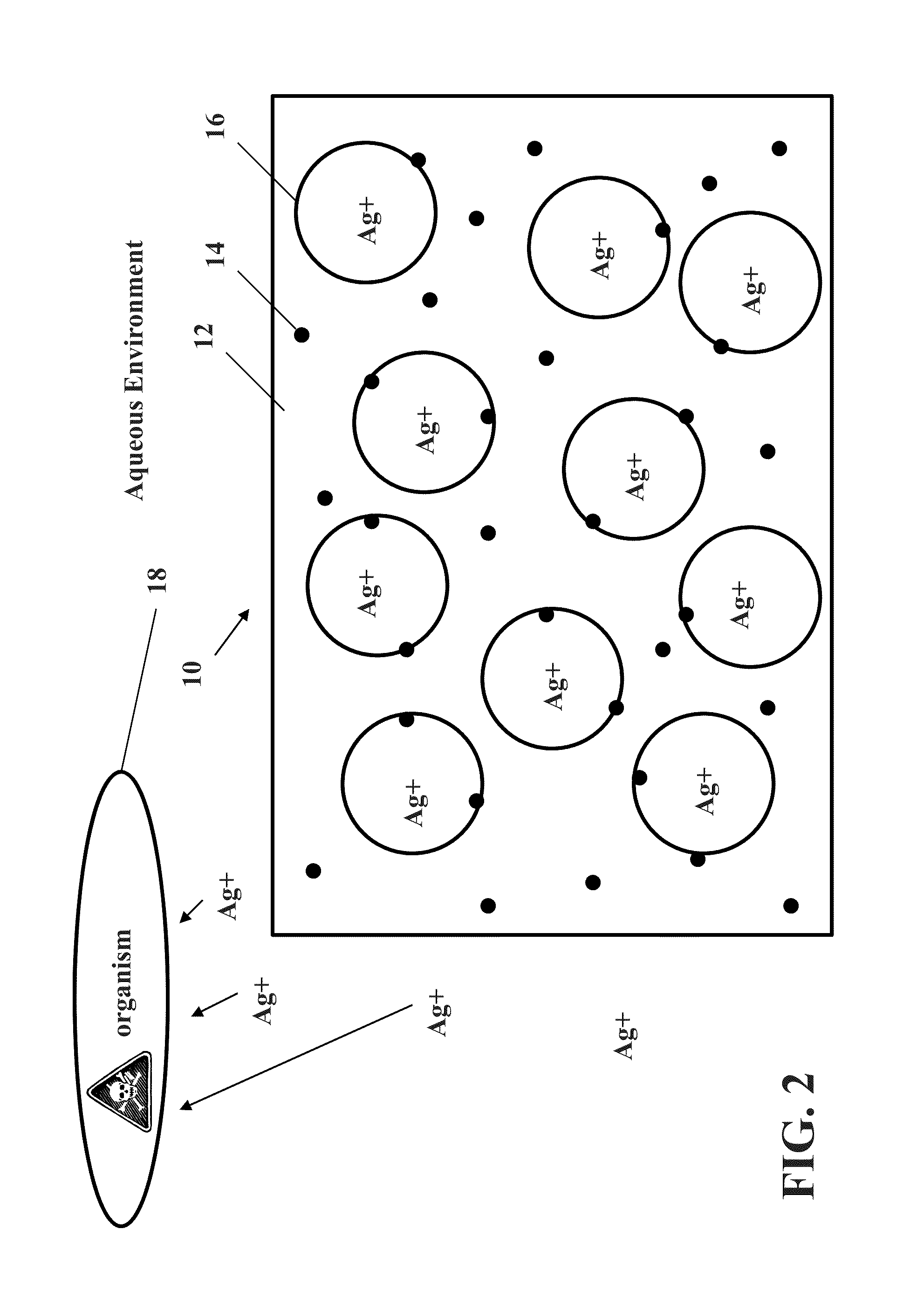Antimicrobial foam and method of manufacture
a technology of antibacterial foam and manufacturing method, which is applied in the field of foam, can solve the problems of silver presenting a significant toxic effect, antibacterial foam not retaining its antibacterial action for an extended period of time, and 5.0 wt % does not increase the antibacterial properties of foam, and achieves the effect of small siz
- Summary
- Abstract
- Description
- Claims
- Application Information
AI Technical Summary
Benefits of technology
Problems solved by technology
Method used
Image
Examples
example 1
[0063]For Example 1, which is a reticulated polyether format foam, ingredients were mixed in the following ratios. The amounts of the ingredients are measured in parts per 100 parts of polyol. The ingredients are:[0064](1) 15 parts of Arcol UHS-150, which is a styrene / acrylonitrile grafted polyol from Bayer Material Science;[0065](2) 85 parts of Arcol F-3040, a 3000 molecular weight (m·wt.) ether polyol from Bayer Material Science, which was first polymerized with 3.0 parts of Mondur TD-80, a blend of 80% 2,4-toluene diisocyanate and 20% 2,6-toluene diisocyanate from Bayer Material Science,[0066](3) 1.0 parts of SmartSilver™, a 5.0% weight / weight nano-silver dispersion in dipropylene glycol from NanoHorizons,[0067](4) 1.32 parts of Superblack 1127, a carbon / polyester dispersion from Rebus, Inc.,[0068](5) 0.50 parts of Niax Silicone L-620, a polyalkyleneoxidemethylsiloxane and copolymer from Momentive,[0069](6) 0.14 parts of Kosmos 10P, a 33% solution of stannous octoate in mineral o...
example 2
[0075]In a second example, a reticulated ester foam was produced in a manner similar to that described in Example 1. Here, 1.0 parts of SmartSilver™ was mixed with the components of the foam. The foam was reticulated, as in Example 1. The foam also was tested for antimicrobial activity according to AATCC™ 100-2004 using Escherichia Coli (E. Coli) with 1.0 g of the foam in 25 ml of innoculum. After twenty-four (24) hours, there was a 99.5% reduction in microbial activity.
[0076]As identified in Examples 1 and 2 above, it is contemplated that the silver nanoparticles 14 will be introduced into the foam matrix 12 via a slurry of 5% silver nanoparticles suspended in PDG (dipropylene glycol). The silver nanoparticles 14 may be introduced in any number of alternative ways without departing from the scope of the present invention.
[0077]Given the large surface area of the silver nanoparticles 14, as discussed above, it is contemplated that only 0.032% by weight of silver nanoparticles 14 are...
PUM
 Login to View More
Login to View More Abstract
Description
Claims
Application Information
 Login to View More
Login to View More - R&D
- Intellectual Property
- Life Sciences
- Materials
- Tech Scout
- Unparalleled Data Quality
- Higher Quality Content
- 60% Fewer Hallucinations
Browse by: Latest US Patents, China's latest patents, Technical Efficacy Thesaurus, Application Domain, Technology Topic, Popular Technical Reports.
© 2025 PatSnap. All rights reserved.Legal|Privacy policy|Modern Slavery Act Transparency Statement|Sitemap|About US| Contact US: help@patsnap.com



